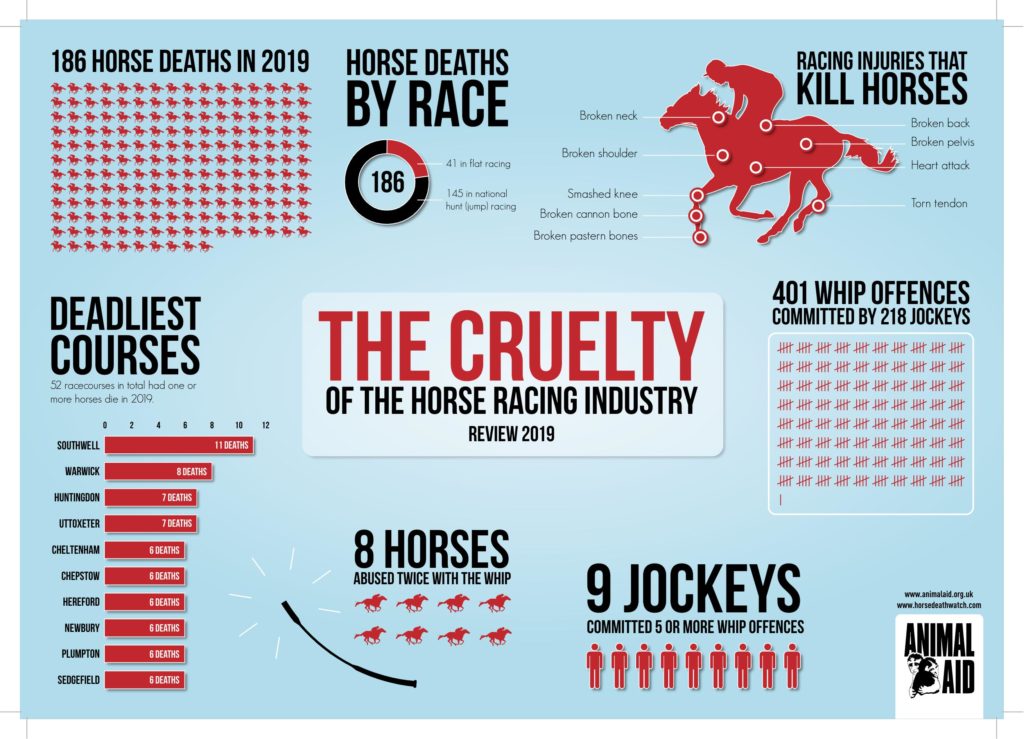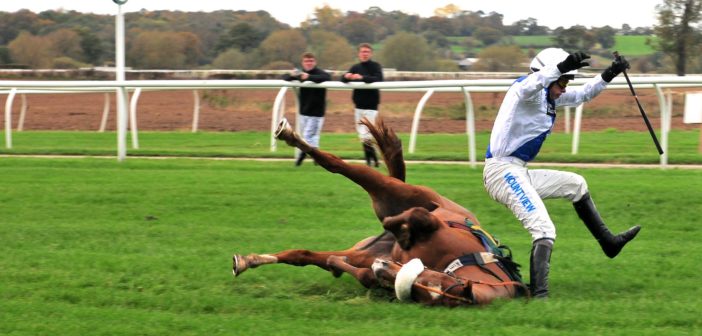Animal Aid’s detailed research into race horse deaths found that 186 horses died in England in 2019 as a direct result of racing. This alarming figure shows no sign of improvement in comparison to the fatality records over recent years.
The heart of the problem is that the racing industry controls its own welfare policy. This means that there is a conflict between a monetary profit-based enterprise where horses are seen as commodities to use for entertainment and gambling, against the cost of meaningful welfare reforms. The latter is losing out and this is reflected in the sheer volume of horse deaths that occurred throughout 2019, as in previous years. Even basic, easy-to-resolve welfare reforms have not taken place. Just one example is the use of the whip, which is often connected with horse deaths. The current regulator continues to fail the horses who race on British racecourses.

The 2019 figures make for grim reading:
- 186 horses died as a result of racing
- 145 were killed in National Hunt (jump) racing
- 41 were killed in flat racing (on all-weather and turf surfaces)
- 52 British racecourses had at least one death
These figures could be broken down into minute detail of how and where horses were killed, but underlying all of this, is that horses were pushed to their physical and mental limits, going beyond their capabilities.
The economics behind racing add a further burden to the horses. Both the racecourses and the racing connections of the animals (owners, trainers, jockeys) depend upon profit. For example, racecourses go to extreme measures to ensure racing takes place when abandonment would be the common-sense option with regards to horse welfare. Added to a “win at all costs” attitude for connections, and young horses are often divested of a future life, dying prematurely.
In 2019 there was even a victim under the age of two – an inexperienced filly known as Anna Fallow, killed in her first race.

British racing’s self-appointed welfare regulator, the British Horseracing Authority (BHA), is so out of touch with events that their 2019 fatality figure could only account for 173 horses. Animal Aid openly challenges the BHA to explain its poor record of accountability. The discrepancy of figures shows racing’s inadequate data collection and analysis as well as its lack of transparency.
These figures must also be considered against the formation, in early 2019, of the Horse Welfare Board – a BHA initiative in response to political pressure. With industry representatives dominating the board, it is merely a halfway house to independent regulation.
Says Dene Stansall, Animal Aid’s Horse Racing Consultant: “Animal Aid believes that the only way to protect horses, whilst the racing industry exists, is to establish a truly independent horse welfare regulator, free from racing’s control – and we will continue to campaign for this.”
Featured image: a horse falls during the UK’s National Hunt race. Image credit Paul, CC BY-SA 2.0.





